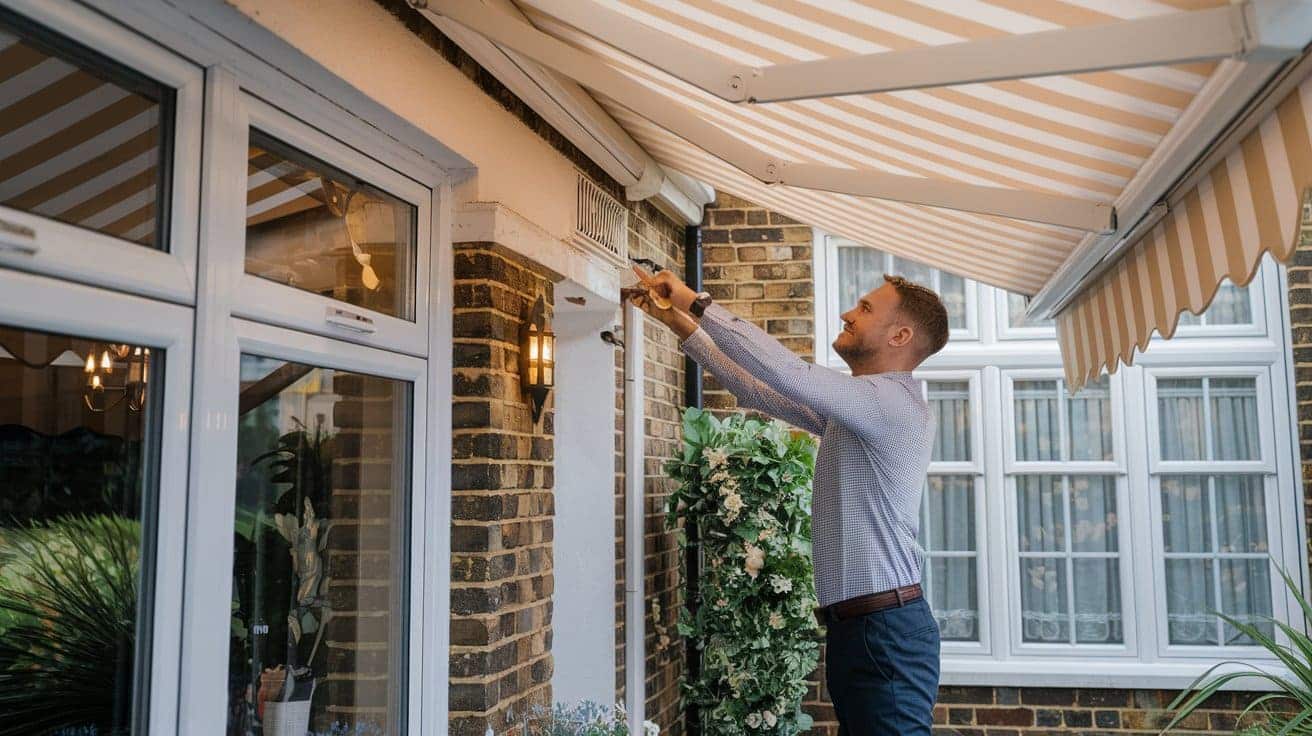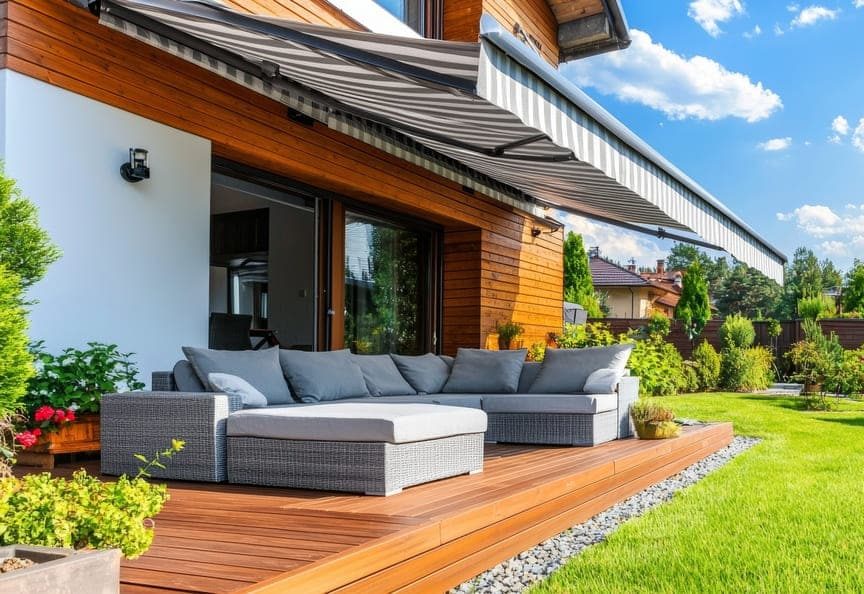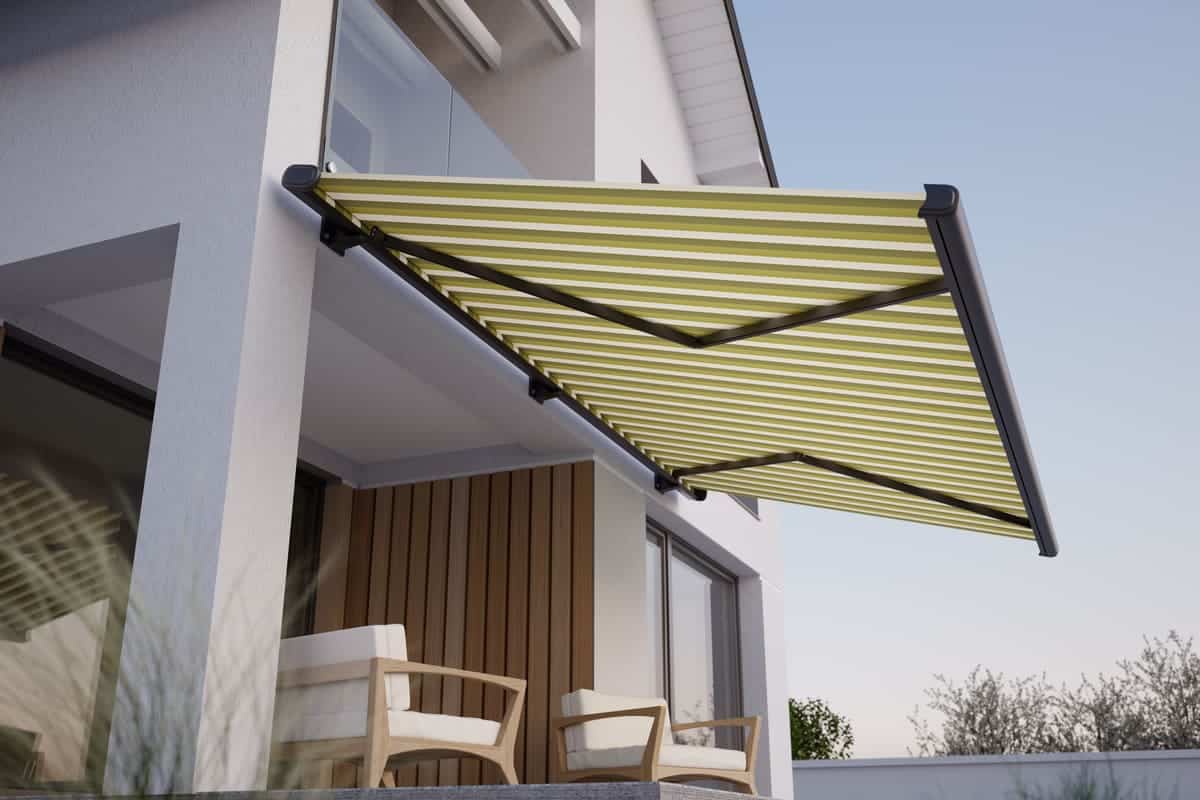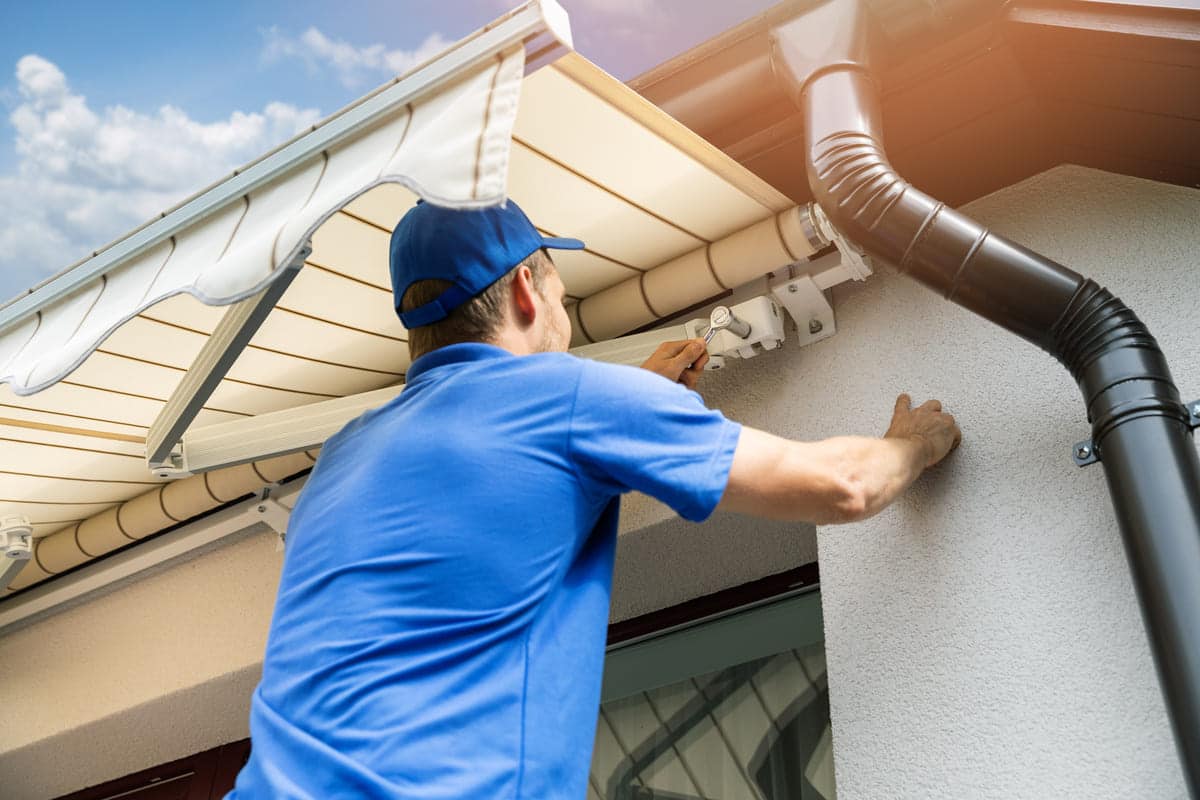Discover Solutions for Weinor Awning Problems
Weinor awnings are designed for durability and performance, but like any mechanical system, they can experience issues over time. Understanding common problems and addressing them early can prevent costly repairs and extend the lifespan of your awning.
Common Issues with Weinor Awnings
Several factors can affect the functionality of your Weinor awning. Some of the most frequently encountered problems include:
- Motor Malfunctions: The awning may fail to extend or retract properly due to electrical issues or motor wear.
- Fabric Tears and Wear: Exposure to harsh weather conditions can lead to fabric deterioration, reducing both aesthetic appeal and functionality.
- Alignment Problems: Misalignment can cause uneven extension, difficulty in operation, or excessive strain on the mechanism.
Importance of Early Detection
Identifying issues early can prevent minor problems from escalating into major repairs. Signs that your awning may require attention include:
- Unusual noises during operation
- Difficulty retracting or extending
- Visible wear or fraying on the fabric
- Uneven movement or sagging sections
Benefits of Regular Maintenance
Routine maintenance ensures your awning remains in optimal condition. Regular cleaning, lubrication of moving parts, and periodic inspections can help detect potential issues before they worsen. Proactive care not only enhances performance but also extends the lifespan of your awning, ensuring continued comfort and protection for your outdoor space.
For homeowners and property owners seeking expert assistance, The Outdoor Living Group offers professional troubleshooting and maintenance services. Book a consultation today to keep your Weinor awning in top shape.
How to Diagnose Motor Issues in Weinor Awnings
A properly functioning motor is essential for the smooth operation of a Weinor awning. When issues arise, identifying the root cause early can prevent further damage and costly repairs. Understanding the symptoms and using the right diagnostic approach ensures efficient troubleshooting.
Symptoms of Motor Failure
Motor malfunctions can manifest in several ways, including:
- Unresponsive Operation: The awning fails to extend or retract when activated.
- Intermittent Functionality: The motor works sporadically or stops mid-operation.
- Unusual Noises: Grinding, clicking, or humming sounds may indicate internal wear or electrical faults.
- Slow or Weak Movement: The awning moves sluggishly or struggles to extend fully.
Diagnostic Tools and Techniques
To diagnose motor issues effectively, consider the following steps:
- Check the Power Supply: Ensure the awning is receiving electricity by testing the outlet and circuit breaker.
- Inspect the Remote Control or Wall Switch: Weak batteries or faulty connections may cause unresponsiveness.
- Listen for Motor Sounds: A silent motor may indicate electrical failure, while grinding noises suggest mechanical wear.
- Test Manual Override (if available): If the awning moves manually, the issue may be electrical rather than mechanical.
- Examine Wiring and Connections: Loose or damaged wires can disrupt power flow to the motor.
Impact on Awning Performance
A malfunctioning motor affects more than just convenience. Prolonged issues can strain the awning’s structure, leading to misalignment, fabric tension problems, or even complete system failure. Addressing motor concerns promptly ensures longevity and optimal performance.
Regular inspections and timely interventions help maintain the efficiency of Weinor awnings, preventing minor issues from escalating into major repairs.
What to Do About Fabric Damage
Fabric damage in Weinor awnings can compromise both aesthetics and functionality. Whether due to prolonged exposure to harsh weather, accidental tears, or natural wear over time, addressing fabric issues promptly ensures the longevity of your awning.
Assessing Fabric Condition
Before deciding on a repair or replacement, thoroughly inspect the fabric for:
- Small Tears or Punctures: Minor damage that can be patched.
- Fraying Edges: Signs of fabric weakening, which may worsen over time.
- Discoloration or Mould Growth: Indications of prolonged exposure to moisture and UV rays.
- Structural Weakness: Areas where the fabric has thinned, making it prone to further damage.
Repair vs. Replacement Decisions
- Minor Tears (Under 5cm): Can often be repaired using fabric patches or adhesive sealants designed for outdoor textiles.
- Larger Rips or Extensive Wear: If the damage affects multiple sections or compromises the integrity of the fabric, replacement is the better option.
- UV and Weather Damage: If the fabric has become brittle or faded beyond recognition, a new, high-quality material will restore both function and appearance.
Techniques for Patching Tears
- Fabric Adhesives: Quick and effective for small punctures.
- Sewing Reinforcement: Using UV-resistant thread for added durability.
- Heat-Sealed Patches: Ideal for waterproof fabrics, ensuring a seamless bond.
Selecting Durable Fabric Materials
High-quality awning fabrics, such as those with spinneret-dyed acrylic fibres, offer superior resistance to fading, moisture, and dirt. Investing in durable materials minimises future damage and extends the lifespan of your awning.
Regular inspections and timely interventions help maintain the integrity of Weinor awnings, ensuring they continue to provide shade and protection for years to come.
Why Alignment Matters and How to Fix It
Proper alignment is crucial for the smooth operation and longevity of a Weinor awning. Misalignment can lead to uneven extension, excessive strain on the motor, and premature wear on the fabric. Addressing alignment issues promptly ensures optimal performance and prevents costly repairs.
Causes of Misalignment
Several factors can contribute to awning misalignment, including:
- Improper Installation: If the awning was not mounted correctly, it may shift over time.
- Structural Shifts: Changes in the mounting surface, such as settling foundations or wall movement, can affect alignment.
- Wind and Weather Damage: Strong winds or heavy rain can push the awning out of position.
- Wear and Tear: Over time, repeated use may cause minor shifts in the awning’s structure.
Step-by-Step Realignment Process
- Inspect the Awning: Extend the awning fully and check for uneven movement or sagging.
- Check Mounting Brackets: Ensure all brackets are securely fastened to the wall or ceiling.
- Adjust the Arms: Loosen the adjustment bolts slightly and reposition the arms to ensure even extension.
- Test the Operation: Retract and extend the awning multiple times to confirm smooth movement.
- Secure the Adjustments: Once aligned, tighten all bolts and fasteners to prevent future shifting.
Tools and Equipment Needed
- Adjustable wrench
- Spirit level
- Measuring tape
- Screwdriver set
Long-Term Effects of Misalignment
Persistent misalignment can lead to fabric tension issues, increased motor strain, and potential damage to the awning’s frame. Regular checks and timely adjustments help maintain functionality and extend the lifespan of the awning.
How to Maintain Your Awning for Longevity
Regular maintenance is essential to ensure the longevity and optimal performance of your Weinor awning. By following a structured care routine, you can prevent common issues such as motor malfunctions, fabric deterioration, and alignment problems.
Recommended Maintenance Schedule
Awnings should be inspected and maintained at least twice a year, ideally before and after peak usage seasons. However, if your awning is exposed to extreme weather conditions, more frequent checks may be necessary.
- Spring: Clean the fabric, check for winter damage, and lubricate moving parts.
- Summer: Inspect for wear and tear, ensure smooth operation, and remove accumulated debris.
- Autumn: Clear leaves and dirt, check drainage systems, and prepare for colder months.
- Winter: Retract the awning during heavy snow or storms to prevent structural strain.
Cleaning and Care Products
Using the right products helps maintain the fabric’s durability and the mechanism’s efficiency.
- Fabric Cleaning: Use mild soap and lukewarm water to remove dirt and stains. Avoid harsh chemicals that may degrade UV-resistant coatings.
- Frame Maintenance: Wipe down the frame with a damp cloth and apply a protective coating to prevent corrosion.
- Lubrication: Apply silicone-based lubricant to moving parts to ensure smooth operation and reduce wear.
Inspection Checklist
- Check for fabric tears, fraying, or discoloration.
- Test motor functionality and responsiveness.
- Ensure brackets and mounting points are secure.
- Look for signs of rust or corrosion on metal components.
Cost Benefits of Preventive Care
Routine maintenance reduces the likelihood of costly repairs and extends the lifespan of your awning. By addressing minor issues early, you avoid expensive replacements and ensure continued protection and comfort for your outdoor space.
When to Seek Professional Help for Your Weinor Awning
While many Weinor awning issues can be resolved with basic troubleshooting, some situations require professional expertise. Knowing when to seek help can prevent further damage and ensure the longevity of your awning.
Indicators That You Need Professional Assistance
Certain signs suggest that DIY fixes may not be sufficient:
- Persistent Motor Failures: If the motor remains unresponsive despite power checks and resets, internal electrical faults may require expert repair.
- Severe Fabric Damage: Large tears, excessive fading, or weakened material may necessitate professional fabric replacement.
- Structural Instability: If the awning frame appears loose or misaligned despite adjustments, improper installation or structural wear could be the cause.
- Unusual Noises or Jerky Movements: Grinding, clicking, or resistance during extension and retraction may indicate mechanical wear that needs specialised attention.
Overview of Weinor Support Services
Weinor provides a range of support services to address complex awning issues, including:
- Technical Diagnostics: Expert assessment of motor, frame, and fabric conditions.
- Component Repairs and Replacements: Professional servicing for motors, sensors, and fabric.
- Alignment and Installation Adjustments: Ensuring proper mounting and smooth operation.
- Warranty Support: Assistance with claims for covered repairs and replacements.
How to Contact Weinor Customer Service
For assistance, customers can reach Weinor support through:
- Official Website: Access troubleshooting guides and service requests.
- Authorised Dealers: Local professionals trained in Weinor products.
- Customer Helpline: Direct support for troubleshooting and service inquiries.
Why Professional Repair is Worth Considering
While DIY solutions can address minor issues, professional servicing ensures long-term reliability. Experts use specialised tools, genuine replacement parts, and industry knowledge to restore optimal functionality, preventing costly future repairs.
Can Advanced Techniques Solve Persistent Issues?
When standard troubleshooting methods fail to resolve persistent issues with Weinor awnings, advanced diagnostic techniques can provide deeper insights and effective solutions. These methods involve specialised tools, technical expertise, and a structured approach to identifying and addressing complex problems.
Advanced Diagnostic Tools
Modern troubleshooting relies on precision instruments to detect underlying faults:
- Multimeters: Essential for testing electrical continuity and identifying wiring faults.
- Infrared Thermometers: Useful for detecting overheating components in motorised awnings.
- Vibration Sensors: Help diagnose mechanical imbalances or motor strain.
- Endoscopic Cameras: Allow for internal inspections of motor housings and structural components.
Techniques for Complex Problems
Persistent issues often require a systematic approach:
- Load Testing: Evaluates motor performance under varying stress conditions to detect inconsistencies.
- Firmware Updates: Ensures the awning’s control system is operating with the latest software, preventing glitches.
- Structural Reassessment: Identifies hidden misalignments or mounting weaknesses that may affect operation.
- Component Isolation: Testing individual parts, such as capacitors or relays, to pinpoint failures.
Risk Assessment and Management
Advanced troubleshooting carries inherent risks, including voiding warranties or exacerbating mechanical wear. Careful evaluation of the issue’s severity and consulting manufacturer guidelines can mitigate these risks.
Comparing Standard and Advanced Troubleshooting
While basic troubleshooting resolves common issues, advanced techniques provide a more thorough diagnosis, ensuring long-term reliability and performance. Investing in specialised assessments can prevent recurring failures and extend the lifespan of Weinor awnings.
Contact The Outdoor Living Group Today
When it comes to maintaining and troubleshooting your Weinor awning, expert assistance can make all the difference. At The Outdoor Living Group, we specialise in providing tailored solutions to ensure your awning remains in peak condition, offering both functionality and longevity.
How Can The Outdoor Living Group Assist with Your Awning Issues?
With over 20 years of experience, our team understands the intricacies of Weinor awnings. Whether you’re dealing with motor malfunctions, fabric wear, or alignment concerns, we offer comprehensive diagnostics, repairs, and maintenance services to restore your awning’s performance.
What Services Does The Outdoor Living Group Offer?
We provide a full spectrum of services, including:
- Expert Consultation & Site Assessment – Our specialists evaluate your awning’s condition and recommend the best course of action.
- Precision Repairs & Component Replacement – From motor adjustments to fabric restoration, we use genuine Weinor parts for lasting results.
- Preventive Maintenance Plans – Regular servicing helps prevent costly repairs and extends the lifespan of your awning.
- Bespoke Awning Solutions – If a replacement is needed, we offer custom Weinor awnings tailored to your space.
How Do I Schedule a Consultation?
Booking a consultation is simple. Contact us via our website or call our team to arrange an on-site assessment. Our experts will guide you through the best solutions, ensuring your awning remains a seamless extension of your outdoor space.
Why Choose The Outdoor Living Group?
As an authorised Weinor dealer, we provide award-winning German-engineered products, professional installation, and unparalleled customer support. Trust us to deliver quality, reliability, and complete peace of mind for your outdoor living needs.
FAQ’s
What Are the Steps for Troubleshooting Common Weinor Awning Issues?
Weinor awnings are built for durability, but occasional issues can arise due to wear, environmental factors, or mechanical faults. Addressing these problems early ensures longevity and optimal performance.
Recognising Common Awning Problems
Several factors can impact the functionality of a Weinor awning. Some of the most frequent concerns include:
Operational Failures: The awning may not extend or retract properly due to electrical disruptions or mechanical obstructions.
Fabric Wear and Tear: Prolonged exposure to sun, wind, and rain can lead to fading, fraying, or mould buildup.
Structural Misalignment: Over time, mounting brackets may loosen, causing uneven extension or sagging.
Step-by-Step Troubleshooting Guide
- Verify Power Supply: Ensure the awning is connected to a functioning power source. Check circuit breakers and remote control batteries.
- Inspect for Physical Obstructions: Debris, dirt, or misaligned components can hinder movement. Clear any blockages.
- Listen for Unusual Noises: Clicking, grinding, or humming sounds may indicate motor strain or mechanical wear.
- Examine Fabric Condition: Look for tears, discoloration, or moisture retention that may require repair or replacement.
- Check Mounting Stability: Loose brackets or misaligned arms can affect operation. Tighten fittings as needed.
- Test Manual Override: If available, manually extend or retract the awning to determine if the issue is electrical or mechanical.
Essential Tools for Troubleshooting
- Multimeter (for electrical diagnostics)
- Screwdrivers & Wrenches (for bracket adjustments)
- Fabric Repair Kit (for minor tears)
- Lubricant (for smooth operation of moving parts)
When to Seek Professional Assistance
If troubleshooting does not resolve the issue, or if structural components appear compromised, professional servicing is recommended to prevent further complications.
Regular maintenance and timely interventions help ensure Weinor awnings continue to provide reliable shade and protection for years to come.
How to Diagnose Motor Issues in Weinor Awnings
A motorised Weinor awning provides effortless shade and protection, but when the motor malfunctions, it can disrupt its functionality. Identifying the early warning signs and using the right diagnostic techniques can help prevent costly repairs and ensure smooth operation.
Recognising Motor Malfunctions
A faulty motor may exhibit several symptoms, including:
Failure to Extend or Retract: If the awning remains stationary despite activation, the motor may not be receiving power or could be internally damaged.
Inconsistent Movement: If the awning stops midway or moves erratically, it may indicate electrical faults or mechanical resistance.
Unusual Sounds: Clicking, grinding, or humming noises suggest internal wear, misalignment, or electrical issues.
Delayed Response: A sluggish reaction to remote commands could point to power fluctuations or motor strain.
Diagnostic Steps
To pinpoint the issue, follow these troubleshooting steps:
1. Check the Power Source: Ensure the awning is plugged in and the circuit breaker hasn’t tripped.
2. Inspect the Remote or Wall Switch: Weak batteries or faulty wiring can prevent signal transmission.
3. Listen for Motor Activity: A silent motor may indicate electrical failure, while grinding sounds suggest mechanical wear.
4. Test Manual Operation: If the awning moves manually but not electrically, the issue likely lies within the motor or control system.
5. Examine Wiring and Connections: Loose or damaged cables can disrupt power flow and should be inspected.
Impact on Awning Performance
A malfunctioning motor affects more than just convenience—it can strain the awning’s frame, cause fabric misalignment, and reduce overall lifespan. Addressing motor issues promptly ensures continued reliability and optimal performance.
What to Do About Fabric Damage
Fabric damage in Weinor awnings can diminish both their visual appeal and functional integrity. Whether due to prolonged exposure to the elements, accidental tears, or natural wear over time, addressing fabric issues promptly ensures longevity and optimal performance.
Evaluating Fabric Condition
A thorough inspection helps determine whether repair or replacement is necessary. Look for:
Surface Weakening: Areas where the fabric appears thin or brittle, indicating potential failure points.
Tears and Punctures: Small rips may be repairable, while extensive damage could require a full replacement.
Fading or Discoloration: UV exposure can degrade fabric over time, affecting both aesthetics and durability.
Mould or Mildew Growth: Persistent moisture retention can lead to fungal buildup, compromising fabric integrity.
Repair vs. Replacement Considerations
- Minor Damage: Small punctures or frayed edges can often be patched using UV-resistant adhesives or reinforced stitching.
- Significant Wear: If the fabric has multiple weak spots, deep discoloration, or structural deterioration, replacing it with a high-quality alternative is advisable.
- Weather Resistance: If the material no longer repels water effectively or has lost its wind resistance, upgrading to a more durable fabric ensures long-term protection.
Effective Repair Techniques
- Adhesive Patches: Ideal for sealing minor tears without compromising flexibility.
- Sewing with Reinforced Thread: Strengthens weak areas while maintaining fabric tension.
- Heat-Sealed Bonding: Creates a waterproof seal for weather-exposed sections.
Choosing High-Quality Fabric
Opt for spinneret-dyed acrylic fabrics, known for their superior UV resistance, water repellency, and long-lasting vibrancy. Investing in premium materials enhances durability, reducing the likelihood of future damage.
Regular inspections and timely interventions help maintain the integrity of Weinor awnings, ensuring they continue to provide reliable shade and weather protection for years to come.
Why Alignment Matters and How to Fix It
Ensuring proper alignment in a Weinor awning is crucial for smooth operation, structural integrity, and longevity. A misaligned awning can cause uneven extension, excessive strain on the motor, and premature wear on the fabric. Addressing alignment issues early prevents long-term damage and maintains optimal performance.
Common Causes of Misalignment
Several factors can lead to an awning becoming misaligned over time:
Installation Irregularities: If the mounting brackets are not precisely positioned, the awning may extend unevenly.
Structural Shifts: Changes in the building’s foundation or wall movement can subtly alter the awning’s alignment.
Environmental Stress: Strong winds, heavy rain, or accumulated debris can exert pressure on the awning, causing it to shift.
Component Wear: Over time, repeated use may loosen bolts or cause minor shifts in the frame.
Step-by-Step Realignment Process
- Assess the Awning’s Positioning: Fully extend the awning and observe any sagging or uneven extension.
- Examine the Mounting Brackets: Ensure all brackets are firmly secured and have not loosened over time.
- Adjust the Support Arms: Slightly loosen the adjustment bolts, reposition the arms for even extension, and retighten them securely.
- Test the Operation: Extend and retract the awning multiple times to confirm smooth movement.
- Reinforce the Fixings: Tighten all bolts and fasteners to prevent future misalignment.
Essential Tools for Alignment Adjustments
- Spirit Level – Ensures even positioning.
- Adjustable Wrench – Tightens bolts and brackets.
- Measuring Tape – Confirms symmetrical extension.
- Screwdriver Set – Secures minor adjustments.
Long-Term Effects of Misalignment
Persistent misalignment can lead to fabric tension issues, increased strain on the motor, and potential damage to the awning’s frame. Regular inspections and timely adjustments help maintain functionality, ensuring the awning continues to provide reliable shade and protection.
How to Maintain Your Awning for Longevity
Regular maintenance is essential to keep your Weinor awning in peak condition, ensuring smooth operation and prolonged durability. By following a structured care routine, you can prevent common issues such as motor wear, fabric deterioration, and structural misalignment.
Seasonal Maintenance Guide
Each season presents different challenges for your awning. A proactive approach helps mitigate wear and tear:
- Spring: Inspect for any damage sustained during winter, clean the fabric, and lubricate moving parts.
- Summer: Monitor for signs of UV exposure, ensure smooth extension and retraction, and remove accumulated debris.
- Autumn: Clear fallen leaves and dirt, check drainage systems, and prepare for increased moisture exposure.
- Winter: Retract the awning during extreme weather to prevent unnecessary strain on the frame and fabric.
Cleaning and Care Essentials
Proper cleaning techniques enhance fabric longevity and maintain the awning’s aesthetic appeal:
- Fabric Care: Use a mild soap solution with lukewarm water to remove dirt and stains. Avoid abrasive cleaners that may compromise UV-resistant coatings.
- Frame Maintenance: Wipe down aluminium components with a damp cloth and apply a protective coating to prevent corrosion.
- Lubrication: Apply a silicone-based lubricant to moving joints and arms to ensure effortless operation.
Inspection Checklist
Routine inspections help identify potential issues before they escalate:
- Examine the fabric for fraying, discoloration, or mould growth.
- Test the motor’s responsiveness and listen for unusual noises.
- Ensure brackets and mounting points remain secure.
- Check for signs of rust or corrosion on metal components.
Long-Term Cost Savings
Preventive maintenance reduces the likelihood of expensive repairs and extends the lifespan of your awning. Addressing minor concerns early prevents larger structural failures, ensuring continued comfort and protection for your outdoor space.
When to Seek Professional Help for Your Weinor Awning
While many Weinor awning issues can be resolved with basic troubleshooting, some situations require professional expertise. Knowing when to seek help can prevent further damage and ensure the longevity of your awning.
Signs That Professional Assistance Is Needed
Certain indicators suggest that DIY fixes may not be sufficient:
Motor Malfunctions Persist: If your awning remains unresponsive despite checking the power supply and remote control, the motor may have an internal fault requiring expert repair.
Fabric Damage Beyond Repair: Small tears can often be patched, but extensive fraying, discoloration, or weakened material may necessitate a professional fabric replacement.
Structural Instability: If the awning frame appears loose, misaligned, or struggles to retract smoothly, improper installation or wear over time could be the cause.
Unusual Noises or Resistance: Grinding, clicking, or jerky movements during operation may indicate mechanical wear or misalignment that requires specialised attention.
Overview of Weinor Support Services
Weinor provides a range of professional services to address complex awning issues, including:
Comprehensive Diagnostics: Experts assess motor performance, frame integrity, and fabric condition.
Component Repairs and Replacements: Professional servicing for motors, sensors, and awning fabrics ensures optimal function.
Alignment and Installation Adjustments: Proper mounting and recalibration prevent long-term operational issues.
Warranty Support: Assistance with claims for covered repairs and replacements.
How to Contact Weinor Customer Service
For assistance, you can reach Weinor support through:
Official Website: Access troubleshooting guides and request service appointments.
Authorised Dealers: Local professionals trained in Weinor products can provide expert installation and repair.
Customer Helpline: Direct support for troubleshooting and service inquiries.
Why Professional Repair Is Worth Considering
While DIY solutions can address minor issues, professional servicing ensures long-term reliability. Experts use specialised tools, genuine replacement parts, and industry knowledge to restore optimal functionality, preventing costly future repairs.









